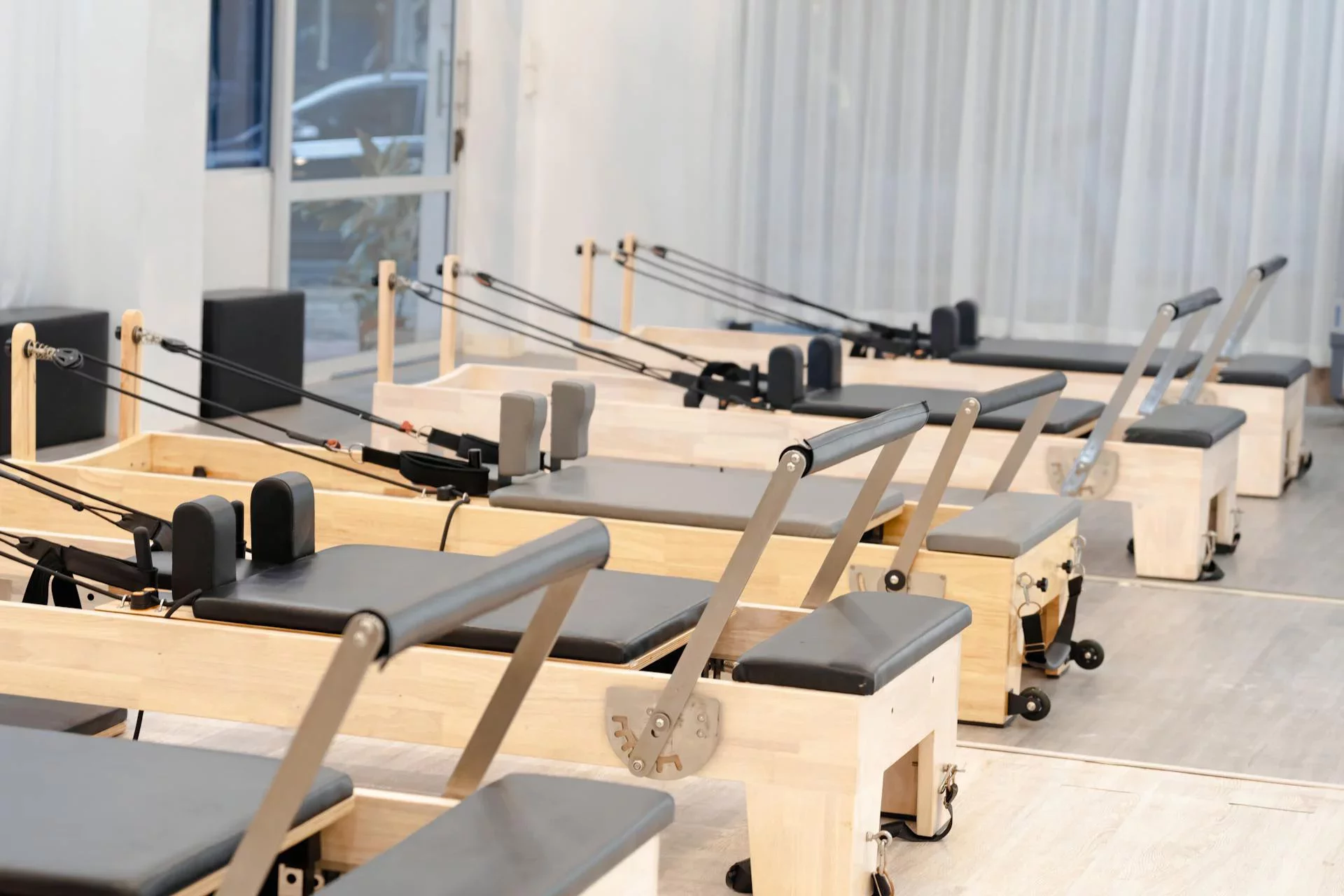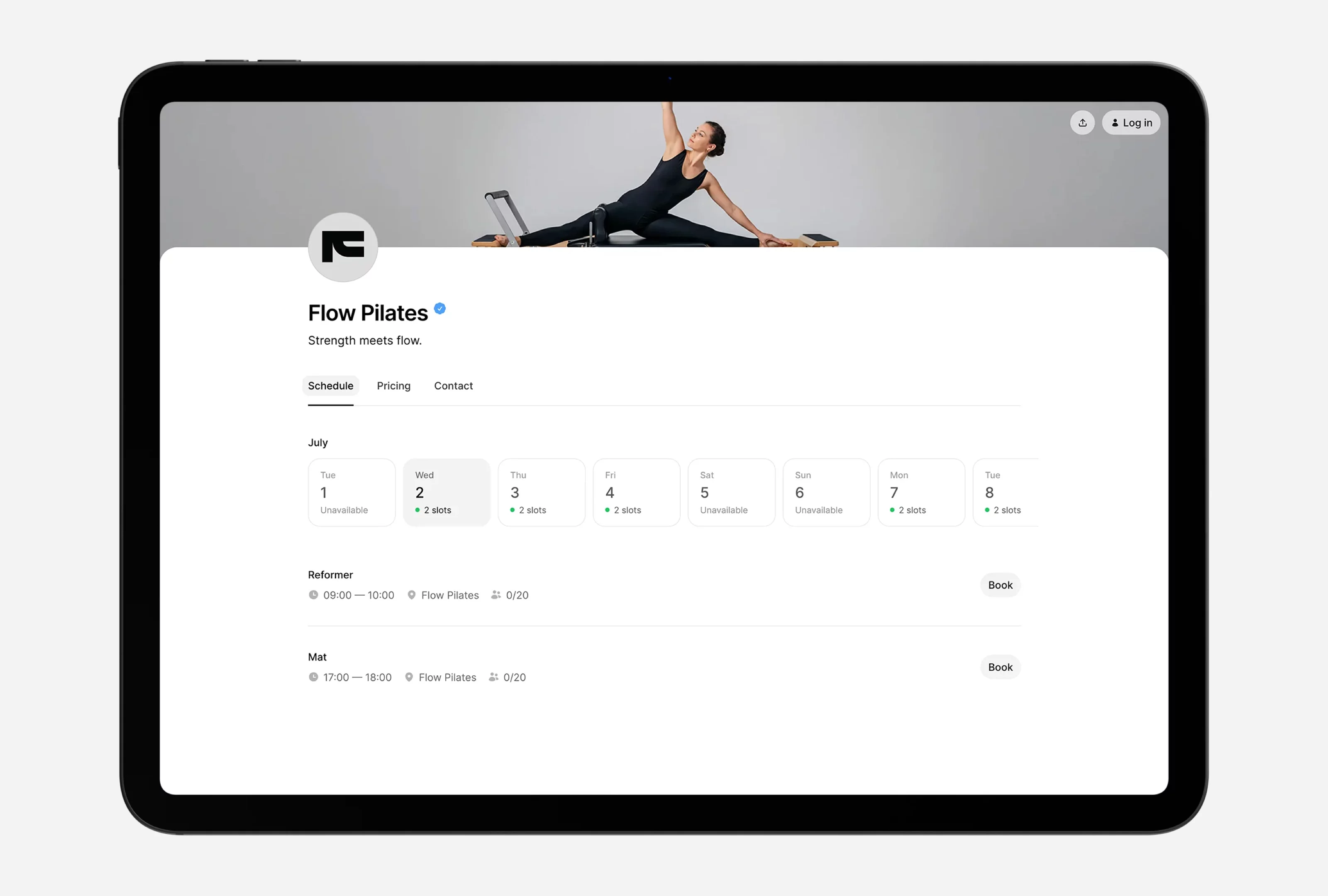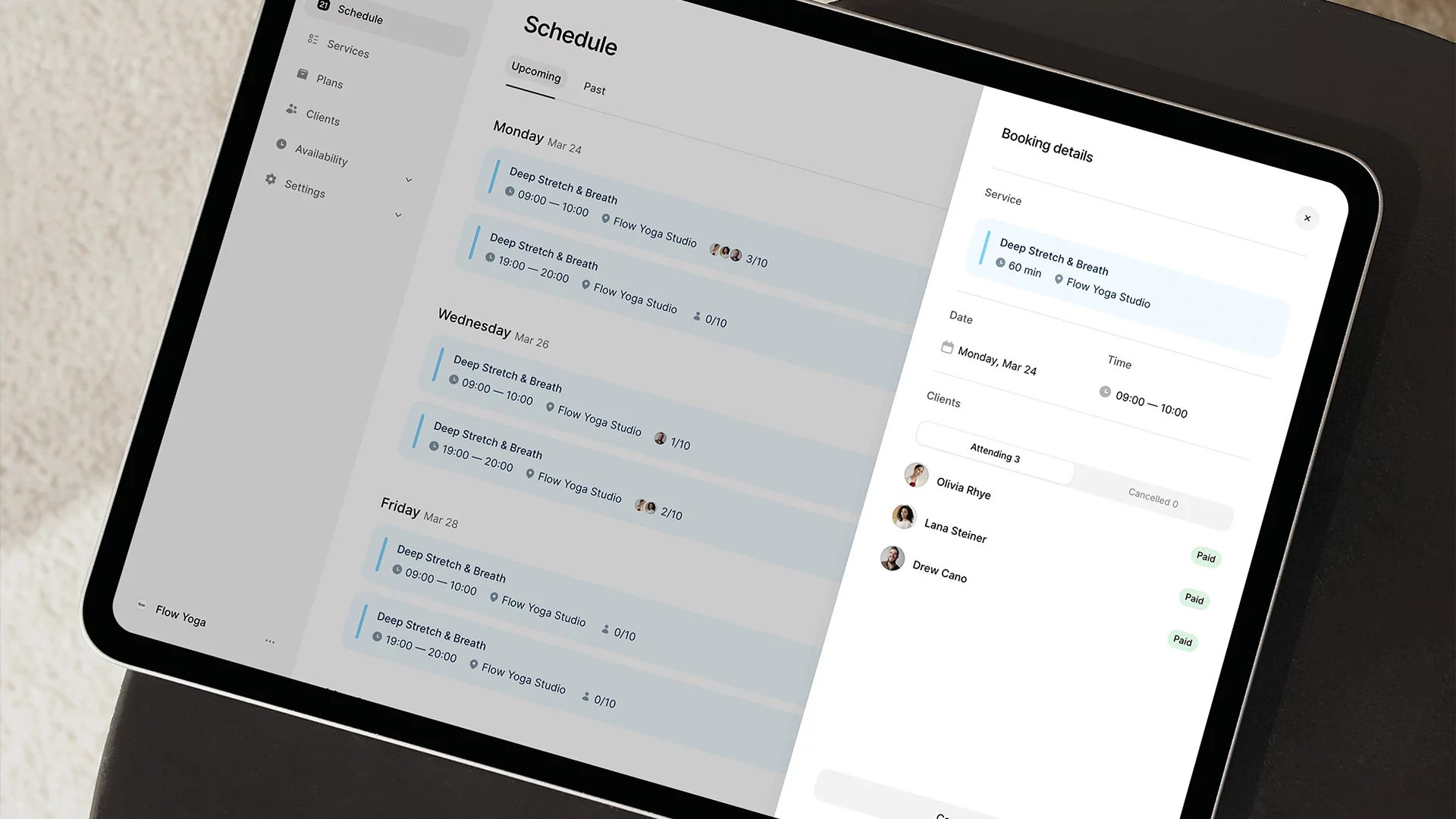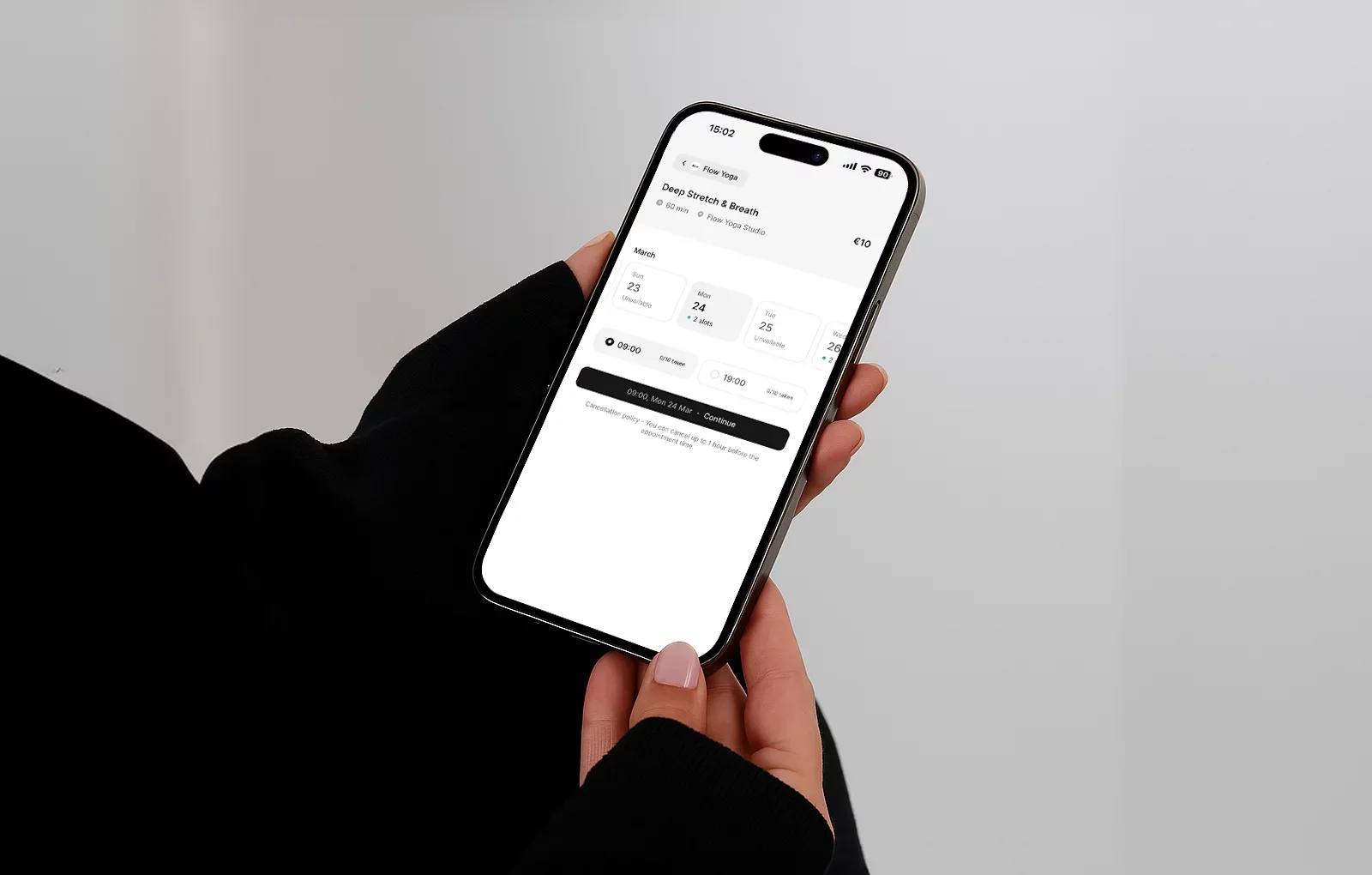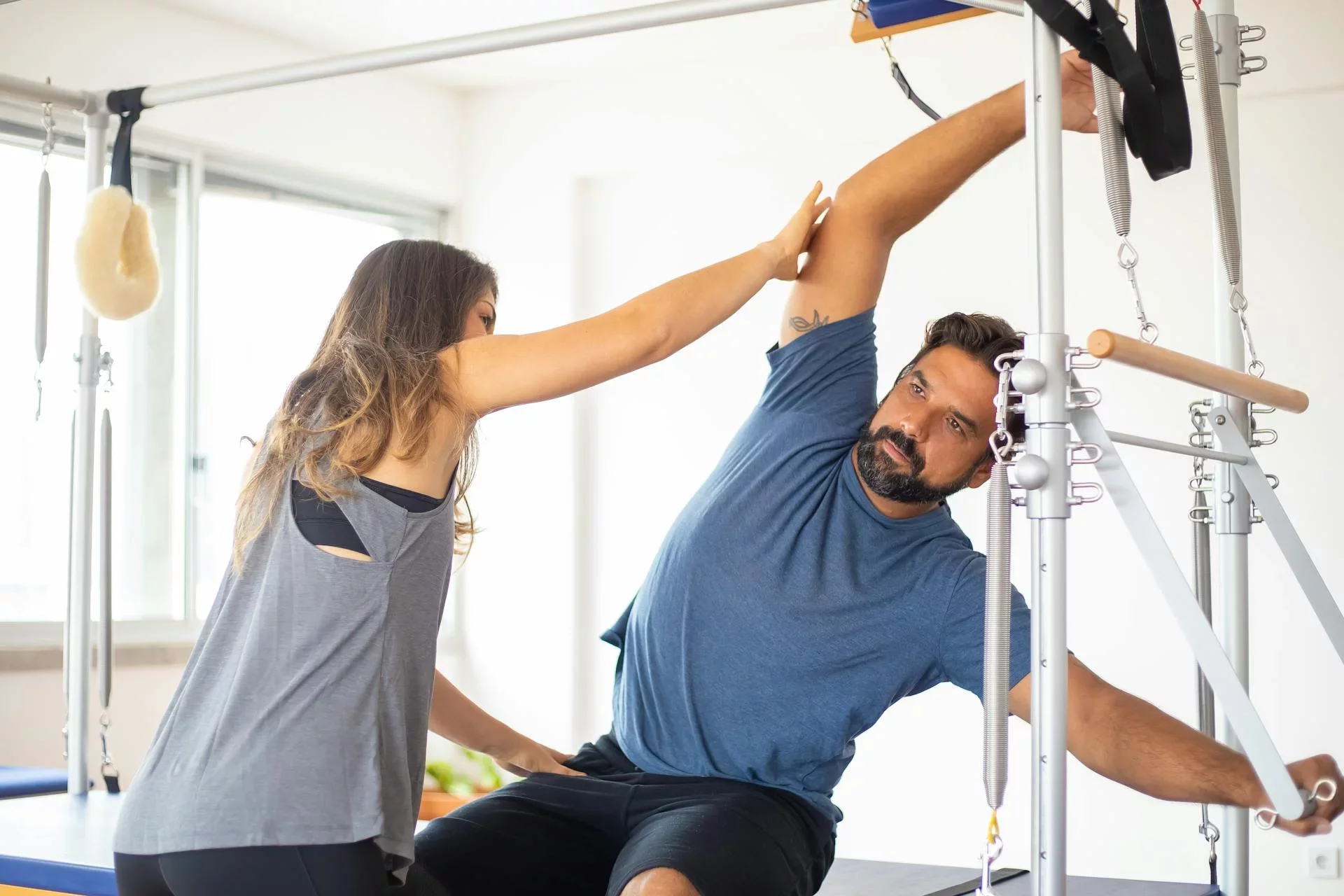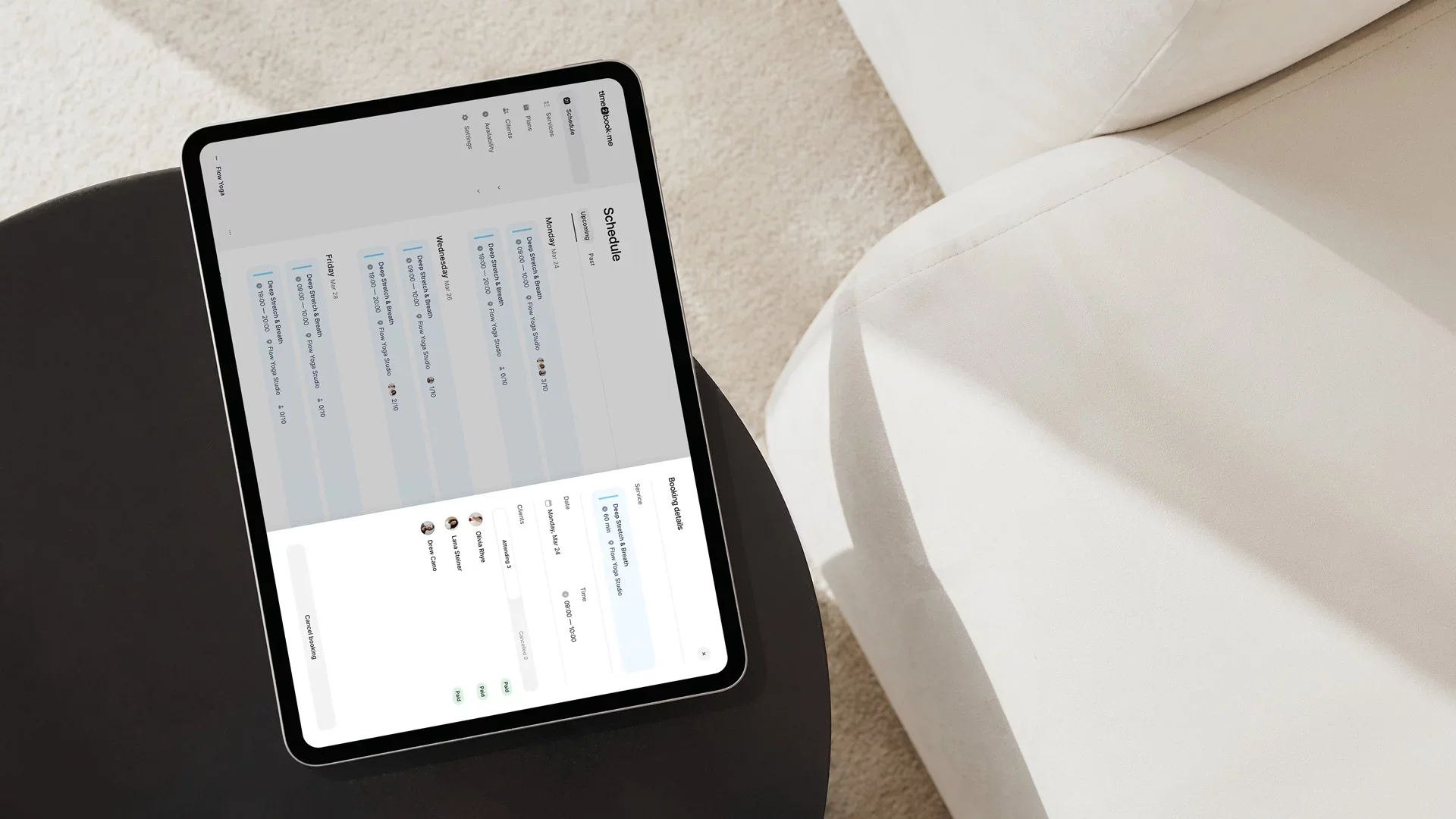Opening a Pilates studio is exciting, but it can also feel overwhelming if you’re just starting out. The good news? You don’t need a huge budget, 20 reformers, or enterprise-level software to succeed.
For smaller studios (1 location, up to 10 clients per class), the path is much simpler: keep costs lean, focus on community, and use tools that don’t drown you in complexity.
In this guide, we’ll cover the 9 essential steps to open and grow a small Pilates studio in 2025 — plus the tools that make running your business smooth and stress-free.
Step 1: Define Your Small Studio Model & Niche
Instead of trying to be everything to everyone, small studios succeed by focusing:
Class size: 6–10 clients max → personal attention + community feel.
Type of Pilates: mat-only (lower startup costs), reformer-only, or a mix.
Target audience: beginners, moms, athletes, retirees.
Small studios thrive on intimacy and connection. That’s your competitive edge against big gyms.
Step 2: Create a Lean Business & Financial Plan
You don’t need a 100-page document — just a clear roadmap.
Typical costs for small studios:
Expense Category | Estimated Cost (EUR) |
|---|---|
Lease (50–120 m²) | €800–€2,500/month |
4–6 Reformers | €15,000–€30,000 |
Mats + props | €1,000–€2,000 |
Insurance & Licenses | €1,000–€2,500/year |
Marketing Budget | €300–€800/month |
Many small studios launch with €25,000–€60,000 in total startup costs.
Step 3: Pick a Location That Fits Your Size
You don’t need a huge, flashy space. Look for:
50–120 m² studio size.
Good ventilation, natural light.
Easy access for your niche (families → residential, professionals → city center).
Smaller space = lower rent + cozier client experience.
Step 4: Invest Wisely in Equipment
Instead of 10–15 reformers, start lean.
Essentials for a small studio:
4–6 reformers.
Mats + props (rings, bands, balls).
Mirrors + proper flooring.
Simple sound system + soft lighting.
Budget: €20,000–€40,000 for a full but compact setup.
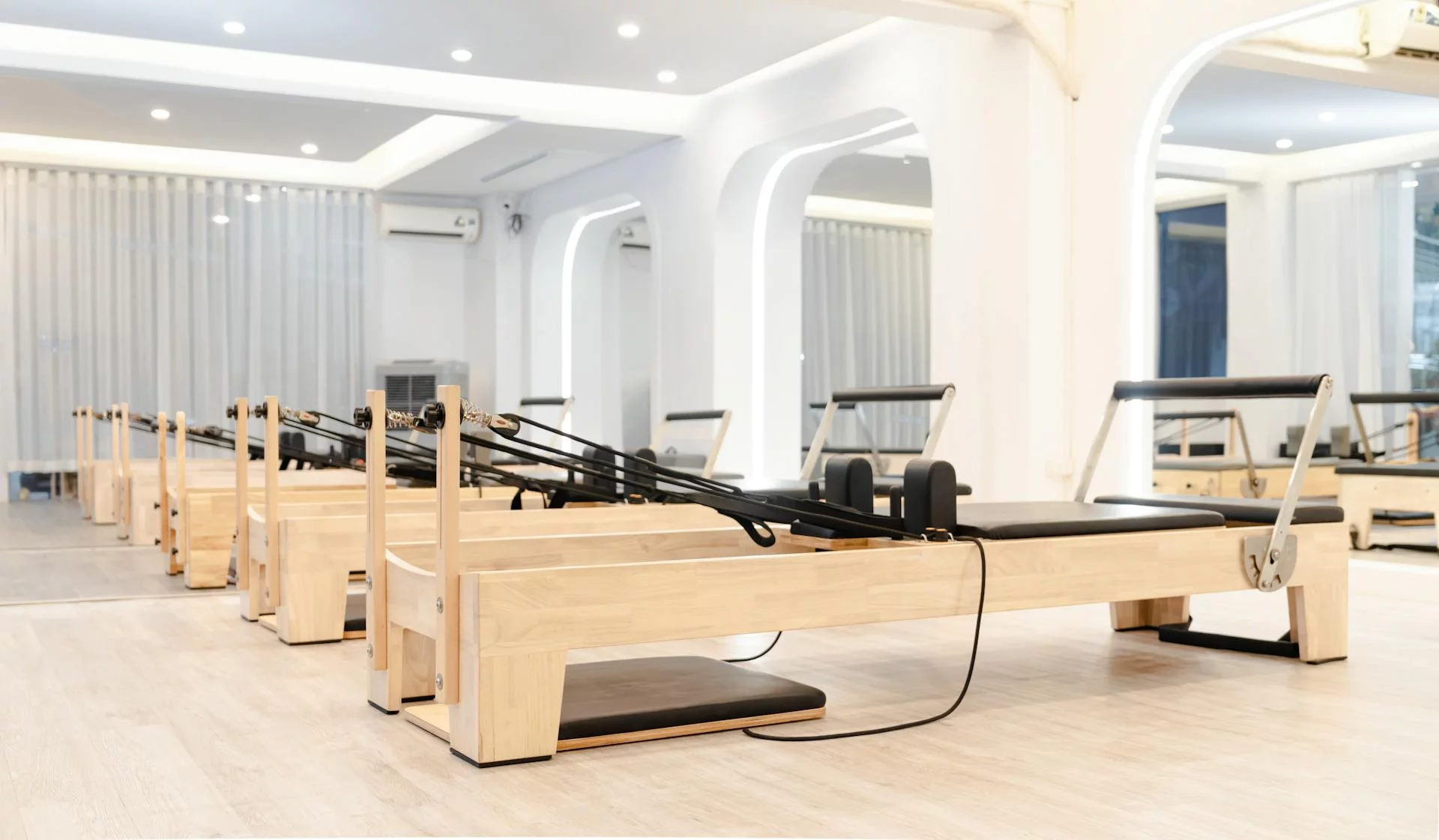
Step 5: Hire the Right Instructors
At small studios, your instructors are family. Clients want familiarity and trust.
Start with 1–2 reliable instructors.
Prioritize certified + personable teachers.
Offer flexible hours or revenue share.
In a 10-client class model, relationships matter more than volume.
Step 6: Build a Seamless Client Experience
Your clients will stay if it feels easy and personal.
Booking: Online, 24/7 (no text or phone chaos).
Payments: Apple Pay, Google Pay, credit card.
Reminders: Auto email/SMS → fewer no-shows.
Community feel: Greet clients by name, celebrate milestones.
Step 7: Do Smart, Local Marketing
You don’t need massive ad budgets. Focus on community and word-of-mouth:
Google Business Profile (for local searches).
Instagram with real class photos.
Referral programs (“Bring a friend, get a free class”).
Partner with local cafés or wellness centers.
Step 8: Use Simple Studio Software
One of the biggest mistakes small studios make is waiting too long to set up proper booking and payment systems. Many try to manage things through texts, spreadsheets, or clunky software — which quickly becomes a headache for both clients and owners.
That’s why starting with a smooth, client-friendly system from day one is so important.
With time2book, the booking flow is designed to be as effortless as possible:
Quick signup: Clients can register with just a click using Facebook, Google, or email.
Easy plan selection: Whether it’s a single class, a pack of 10, or a monthly membership, choosing a plan takes seconds.
Fast, secure checkout: Apple Pay, Google Pay, or card payments are integrated natively — no clunky redirects.
Instant booking confirmation: In under 40 seconds on average, a client goes from discovering your studio to being fully booked and paid.
For studio owners, the experience is just as smooth: a clean, modern dashboard to manage schedules, payments, and clients without digging through complicated menus. You’ll always know who’s booked, who’s paid, and how many sessions they have left.
This focus on excellent user experience and design is what makes time2book different. While other systems overwhelm small studios with features they don’t need, time2book keeps things simple — giving you the essentials that actually matter.
Step 9: Retain Clients for Long-Term Growth
With smaller classes, retention is everything. A few lost clients = big revenue gaps.
Tips to boost retention:
Offer small group packages (e.g., 10-class pack).
Celebrate client milestones (1st month, 50th class).
Check in personally if someone misses 2–3 classes.
Run seasonal challenges (e.g., “30-day mat challenge”).
FAQs
Usually €25,000–€60,000, depending on reformers, rent, and build-out.
time2book is ideal — simple, modern, affordable. Unlike Mindbody or Glofox, it’s built for small studios that don’t need 100+ features.
Yes — profit margins can reach 20–30% if classes run at 70–80% capacity consistently. With 6–10 clients per class, community feel drives loyalty.
Not necessarily. With time2book, your studio automatically gets a profile page with a shareable URL. You can add this link to your Instagram bio, Facebook page, or email signature, and clients can instantly see your schedule and book a class.
You can even generate a QR code to display in your studio — clients scan it and are taken straight to your booking page. This makes getting started fast and professional without the cost or effort of building a full website.
Conclusion
You don’t need a massive budget or a big chain setup to run a profitable Pilates studio. For single-location studios with 6–10 clients per class, success comes from:
Clear niche.
Lean startup costs.
Personal client relationships.
Simple booking and payment tools.
Start with time2book — the all-in-one booking and payment system built for small Pilates studios. Fast setup, affordable pricing, and everything you need to start strong.
